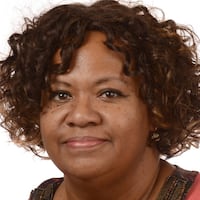Children suffering from a common but often overlooked learning disability may get help from the state in the next legislative session. The Senate Study Committee on Dyslexia plans to recommend that the state allocate a portion of its $25 billion budget to help these students.
The committee was created at the end of the 2018 state Legislature to explore and draw attention to the educational impact of dyslexia on countless children and adults in the state. Research has indicated that early diagnosis is critical.
Approximately 85 percent of students identified as having a learning disability struggle with reading and language processing. As a result, as many as 15 to 20 percent of the population has dyslexia.
“I had no idea it had such a huge impact on education,” said Sen. Fran Millar, R-Atlanta, sponsor of the Senate resolution and chair of the committee it created. “A parent approached me last fall and asked what we were doing about dyslexia. Nobody had ever asked me that in 20 years of being in the Legislature.”
Millar first did research to understand what dyslexia is. According to the International Dyslexia Association:
“Dyslexia is a specific learning disability that is neurobiological in origin. It is characterized by difficulties with accurate and/or fluent word recognition and by poor spelling and decoding abilities. These difficulties typically result from a deficit in the phonological component of language that is often unexpected in relation to other cognitive abilities and the provision of effective classroom instruction. Secondary consequences may include problems in reading comprehension and reduced reading experience that can impede growth of vocabulary and background knowledge.”
Millar realized that he and others needed to do more to help these students. The committee was named in June, had its first meeting in August and plans to meet again at 1 p.m. Dec. 3 at the Capital to finalize its proposal. There will be funds allocated, but he said it’s a matter of paying for it now through prevention or paying for it later with services for people who can’t find work and may have other issues.
Although the final plan is still being crafted, Millar said he wants to mandate dyslexia screening at every Georgia public school for students who exhibit signs of the disorder. And it should happen as early as pre-K and kindergarten.
"Many parents are told that their child can't be tested until fourth or fifth grade, but there are reliable assessments that can detect dyslexia much earlier," said Karen Huppertz, president of the International Dyslexia Association Georgia. She added that Georgia is one of eight states that has no legislation to help dyslexics.
“Dyslexia falls within the Americans with Disabilities Act,” said Huppertz. “The state is legally obligated to provide services, but most parents and educators don’t know what they need.”
Another major component of Millar’s plan is making it mandatory that every school have a staffer trained to recognize the symptoms. He’d also like the university system to require a course for all teachers.
“It won’t do any good to have the screening if the professionals can’t recognize who needs it,” said Millar.
That was music to the ears of Jessica Dickson, whose daughter Dylan was diagnosed at age seven with dyslexia.
“I knew early on that something was wrong,” said Dickson. “I kept pushing and pushing for the school help me figure it out.”
Dylan was socially and emotionally ready to enter school at age five, but Dickson was encouraged to hold her back. And by first grade, Dylan needed more extra help than the other students, but it didn’t seem to make much difference.
“She was bright enough to get by, but as reading became more necessary, she was falling farther behind,” said Dickson.
Heidi Collins had similar struggles with her son Ches.
“By the time he was in third grade it was as if he’d hit a brick wall,” she said. “He hated school and threatened suicide if he had to keep going.”
As an educator herself, Collins knew almost nothing about dyslexia. She has a master’s degree as a reading specialist and had no training in the most prevalent reading disorder.
“It’s important that dyslexia become a part of the teaching curriculum,” said Collins. “It affects every aspect of learning. Before third grade you learn to read. After third grade, you read to learn.”
That’s why it’s so important that children are reading at grade level by third grade. It is nearly impossible to catch up if you haven’t mastered basic reading skills by then.
“Teachers aren’t trained to identify and understand the warning signs,” said Collins. “I pretty much educated myself so I could help my own child. I read articles and blogs and paid for training.”
She encouraged other teachers to attend summer courses partially funded by IDA and bring that knowledge back to their schools.
“A lot of administrators don’t understand the issues with dyslexia, and if they’ve invested time and money in a certain curriculum, they don’t want teachers telling them they should use something else.”
Huppertz and Collins agree that advocacy is key to changing the way children are taught to read.
“A curriculum based on structured literacy (a teaching approach that includes explicit and multisensory instruction in phonics, syllables and other necessary components for reading and writing skills) will benefit all children, not just dyslexics,” said Huppertz.
Jermaine Seamón wished that his dyslexia had been detected early.
The 43-year-old crime-scene investigator carried his secret around for years before he finally embraced the disability and shared his story with others. He wasn’t diagnosed until eighth grade and up to then struggled in just about every class.
“Once I understood that I had dyslexia, I now take my time with tasks, work ahead — don’t procrastinate and keep a dictionary with me and use a spell checker,” said Seamón. “I use a bookmark when I’m reading to keep the words on the same line.”
Even with the support of his wife, a former educator, he didn’t reveal his disorder to his daughter until a few years ago. Together they wrote a book, “Daddy’s Big Secret,” to explain how an undiagnosed issue early in life can have consequences well into adulthood.
“I couldn’t let the illness define me,” said Seamón. “I had to admit to it, take control of it and help others.”
Similarly, Dylan Dickson has learned to embrace her differences by writing a book. “Why Can’t I Read?” is a collaboration with her grandmother. She plans to write another one by herself proclaiming, “Now I Can Read!” She’s met actor Henry Winkler, a fellow dyslexic, and often wears a T-shirt with names of other famous dyslexics — Albert Einstein, George Washington — and Dylan Dickson.
“Having dyslexia is like having all the same toys as other kids,” said Dylan. “Their Legos, markers and Barbies are neatly in boxes and mine are jumbled all over the place. It just takes me longer to get to my toys.”
FOUR QUESTIONS ABOUT DYSLEXIA
What is dyslexia?
Dyslexia is a language-based learning disability. Dyslexia refers to a cluster of symptoms, which result in people having difficulties with specific language skills, particularly reading. Students with dyslexia usually experience difficulties with other language skills such as spelling, writing, and pronouncing words.
What causes dyslexia?
The exact causes of dyslexia are still not completely clear, but anatomical and brain-imagery studies show differences in the way the brain of a person with dyslexia develops and functions. Most people with dyslexia have been found to have problems with identifying the separate speech sounds within a word and/or learning how letters represent those sounds, a key factor in their reading difficulties. Dyslexia is not due to either lack of intelligence or desire to learn; with appropriate teaching methods, students with dyslexia can learn successfully.
How widespread is dyslexia?
Perhaps as much as 15–20 percent of the population as a whole has some of the symptoms of dyslexia, including slow or inaccurate reading, poor spelling, poor writing, or mixing up similar words. Not all of these will qualify for special education, but they are likely to struggle with many aspects of academic learning and are likely to benefit from systematic, explicit, instruction in reading, writing, and language.
What are the signs of dyslexia?
People with dyslexia have difficulties in acquiring and using written language. It is a myth that people with dyslexia “read backwards,” although spelling can look quite jumbled at times because students have trouble remembering letter symbols for sounds and forming memories for words. Other problems include:
- Learning to speak
- Learning letters and their sounds
- Organizing written and spoken language
- Memorizing number facts
- Reading quickly enough to comprehend
- Persisting with and comprehending longer reading assignments
- Spelling
- Learning a foreign language
- Correctly doing math operations
Not all students who have difficulties with these skills have dyslexia. Formal testing of reading, language, and writing skills is the only way to confirm a diagnosis of suspected dyslexia.
Source: International Dyslexia Association
About the Author
Keep Reading
The Latest
Featured



